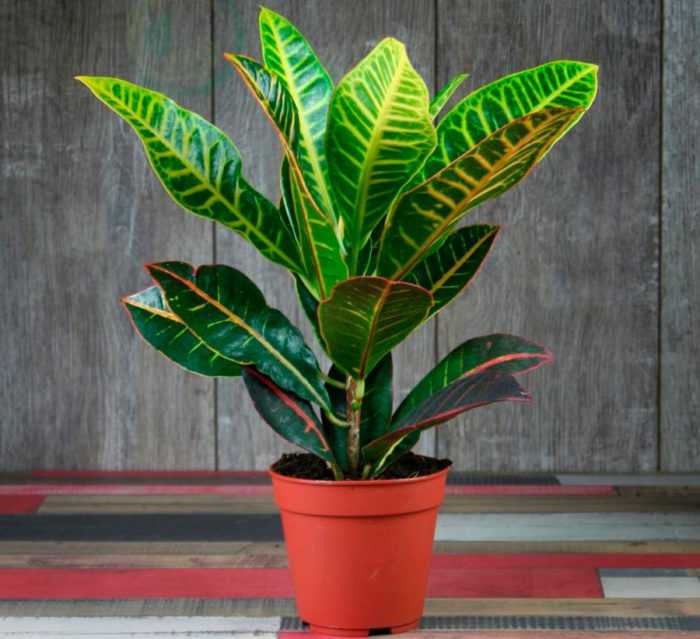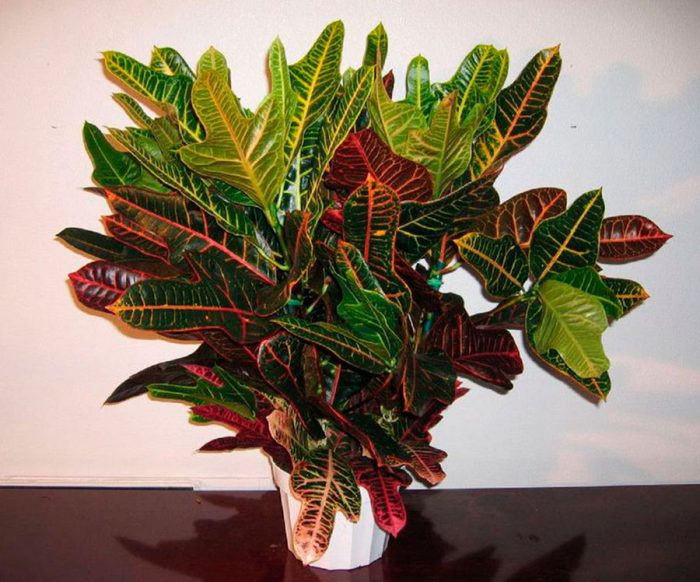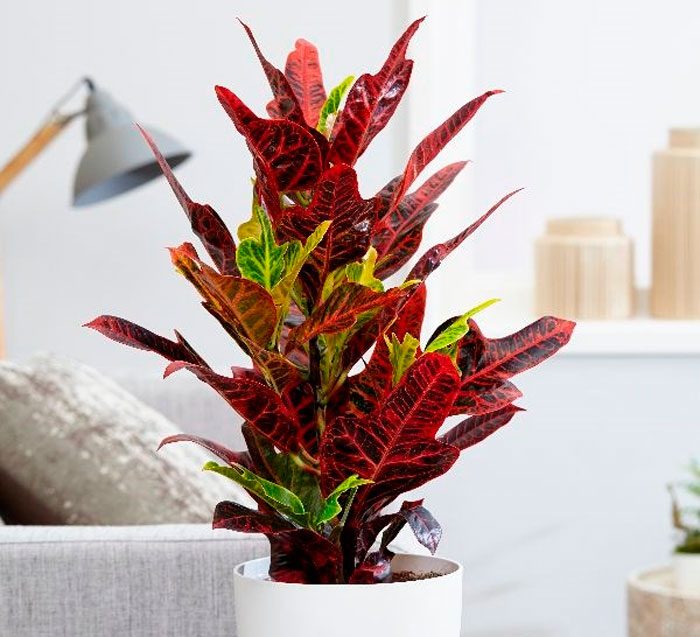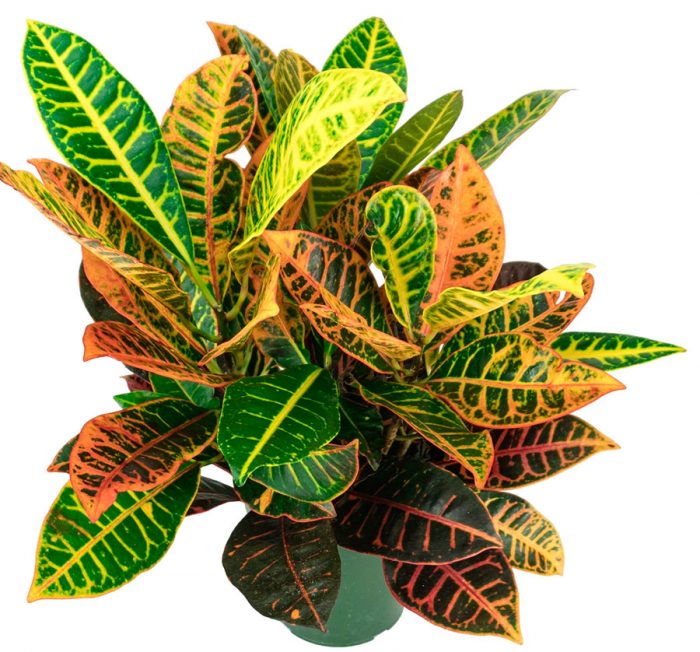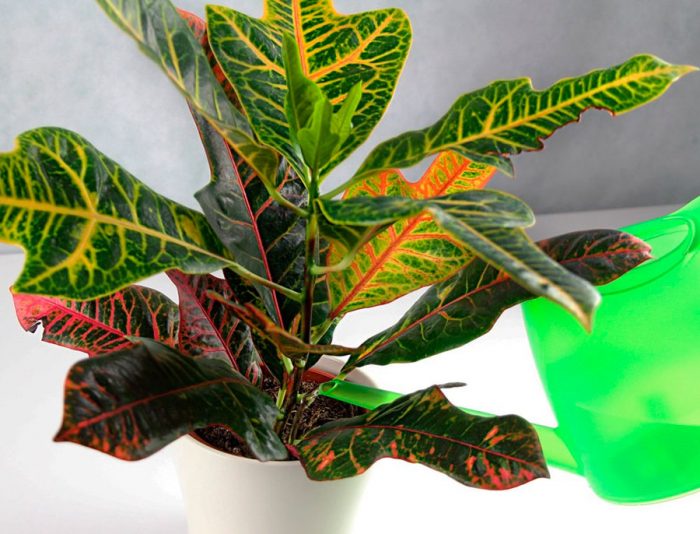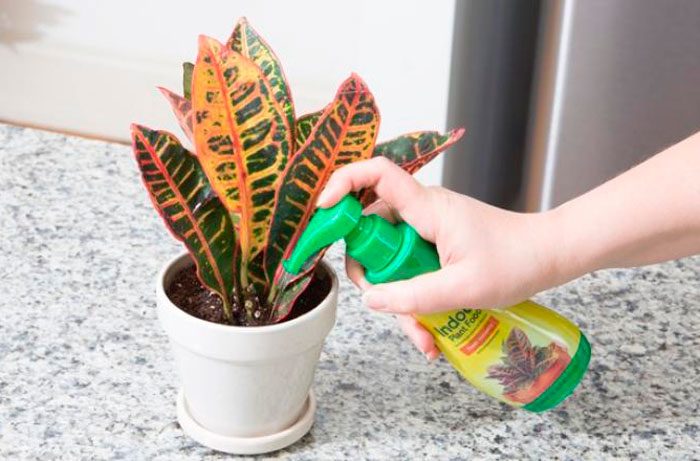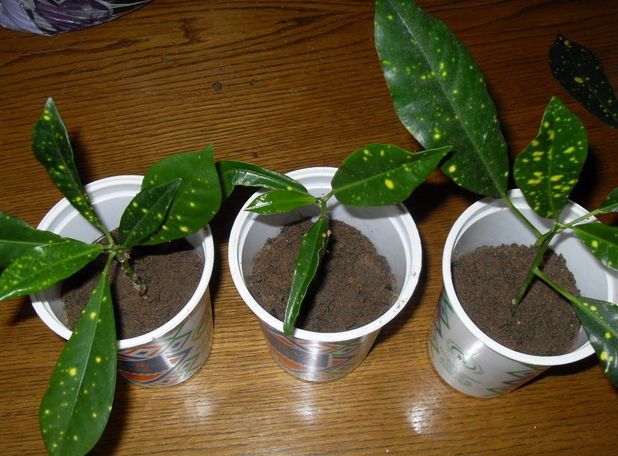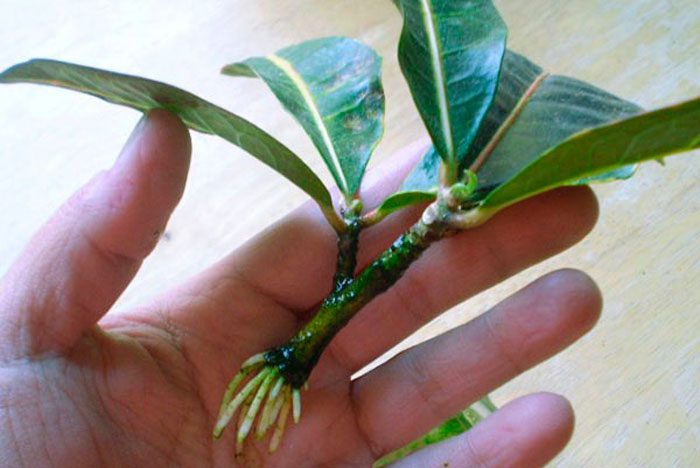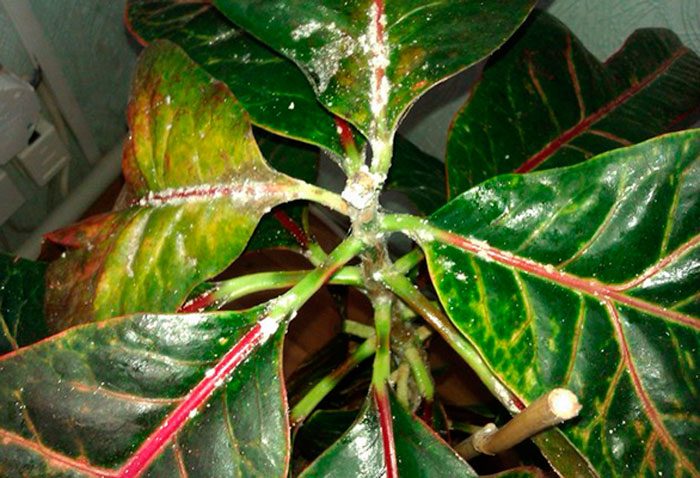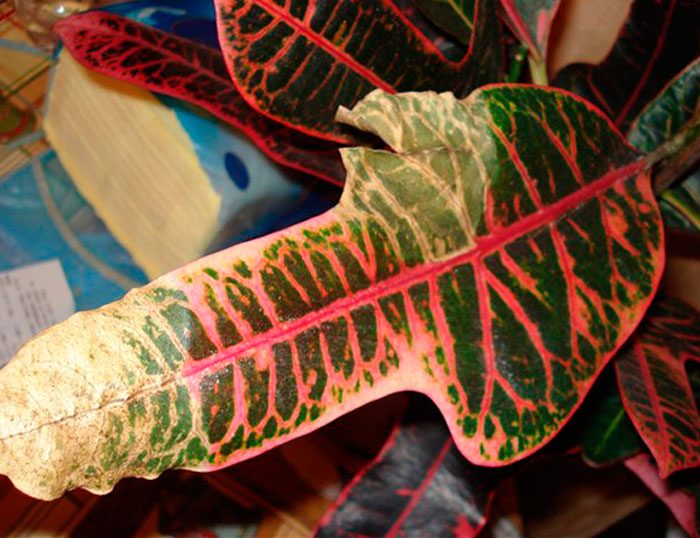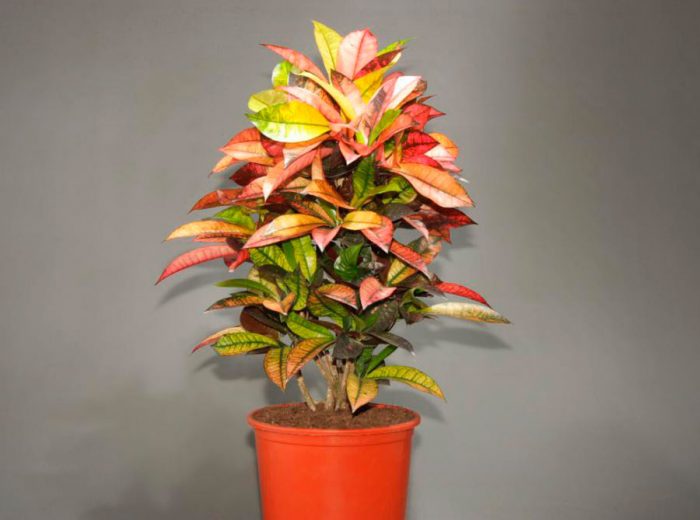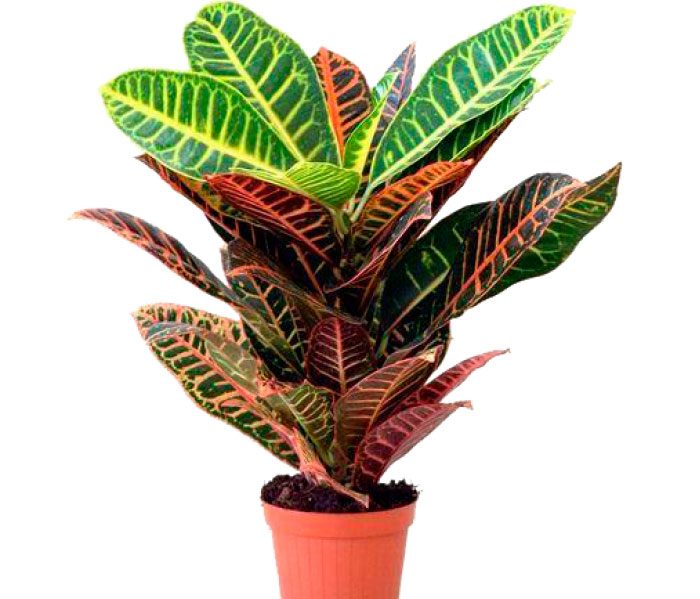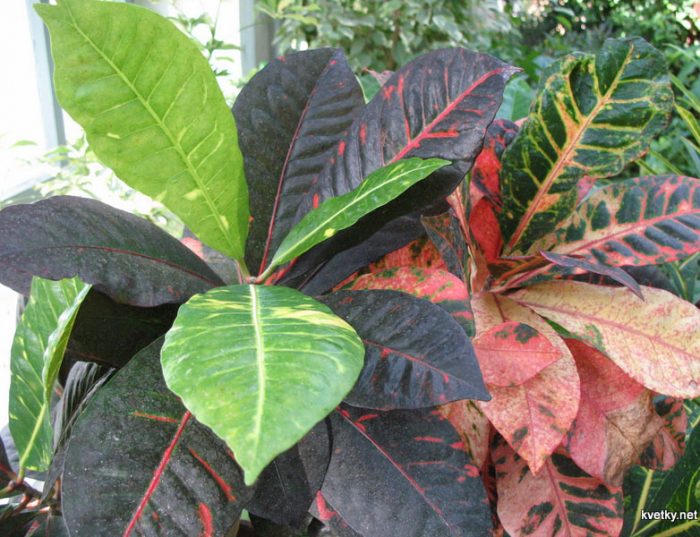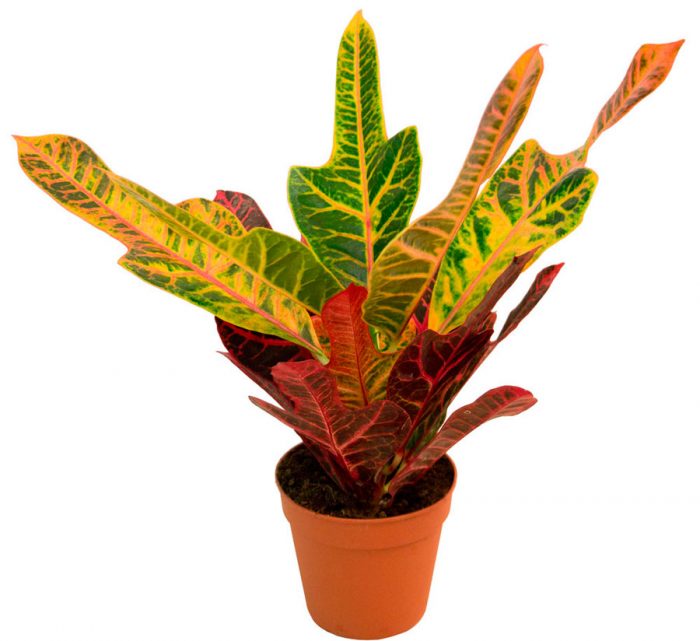Croton, also called "Joseph's cloak" or Codiaeum, is a member of the Euphorbia family. The most popular among flower growers is not the scientific name codiaum, which means "head" in Greek, but croton, at the same time, what this word means, no one knows for sure. There is an opinion that this name comes from the name of a city located in southern Italy, in which Pythagoras once founded his own school, and maybe in one of the adverbs this word is translated as "bush" ... This plant comes from the islands of the Pacific Ocean and the North Australia, and also from Southeast Asia and India. According to information taken from various sources, this genus unites from 17 to 1200 species, but only variegated croton, as well as its hybrids, are grown at home. Such a flower is the most beautiful of all decorative deciduous houseplants, it can become the main decoration of any room, while, due to its compactness, it does not take up much space. In some countries, such a home flower is the keeper of the hearth, while it protects the home from poor energy.
Content
Brief description of cultivation
- Bloom... Croton is an ornamental deciduous plant.
- Illumination... Until noon, the bush must be provided with bright sunlight, while after that - a little shading or diffused bright light.
- Temperature regime... In the summer, from 20 to 22 degrees, and in the winter - at least 16 degrees.
- Watering... Water it regularly and in moderation.
- Air humidity... It should be elevated. The bush must be regularly moistened with a sprayer and the foliage must be rinsed, and another 1 or 2 times a month it needs to have a shower.
- Fertilizer... From April to November, the bush must be fertilized with a complex mineral fertilizer for decorative deciduous plants, they do this 1 time in 2 weeks. The rest of the time, feeding is carried out 1 time in 4 weeks.
- Dormant period... During the winter time.
- Transfer... Young bushes - twice a year, and adult specimens - once every couple of years.
- Reproduction... By seed method and stem, as well as leafy cuttings.
- Harmful insects... Mealybugs, scale insects, nematodes, spider mites.
- Diseases... Gray rot and sooty fungus.
- Properties... Such a culture has a poisonous juice.
Features of Croton
The croton plant, grown at home, is a bush with leathery leaf plates, the shape of which can be very different: oblong-lanceolate, asymmetric, pointed or obtuse, three-lobed, broad-ovate, whole-edged, notched, etc. Young leaves are usually painted in a paler greenish-yellow color, after a while the color becomes brighter burgundy and green, in this regard, such a plant looks like an elegant tree in autumn. For all varieties and varieties, a common feature for leaf blades is a pronounced venation. Croton blooms not very effectively. So, during flowering, axillary drooping brushes are formed, consisting of inconspicuous cream-colored flowers.
Croton care at home
The houseplant croton is one of the most capricious flowers, which are quite difficult to care for. Care features:
- The juice of this plant contains a strong poison.which can cause vomiting, diarrhea, or contact dermatitis. In this regard, when working with a bush, it is imperative to wear gloves.
- Croton needs high humidity. That is why you need to systematically moisten the bush from a spray bottle, and in addition, wipe the leaf plates with a damp soft cloth or sponge. In the summertime, the bush must be provided with a regular warm shower, which is carried out once every 4 weeks.
- This plant reacts extremely negatively to drafts, and also to cold water used for irrigation.
- In some cases, at the beginning of the growing season, it was noticed that the foliage of the bush takes on a variety of unusual shapes. Scientists today cannot give an exact answer to what this is connected with. However, it should be borne in mind that this culture is distinguished by a very high degree of mutability, which is why the breeders managed to breed so many different hybrid forms and varieties that differ from each other only in the appearance of the leaf plates.
- Croton bloom is unattractive, but it takes a lot of energy from the bush. If you are not going to collect seeds, then pick off flower buds or flower stalks immediately after their formation.
Illumination
Such a plant needs bright sunlight, but direct sunlight cannot harm it only in the morning or evening. In this regard, in summer, it is recommended to put a pot with a bush on a north-facing window, while in winter a southern window sill is suitable. Experts recommend, if there is such an opportunity, to move the bush outside in the summer, while choosing a place with a bright diffused light.
Temperature regime
In the warm season, Croton feels best at an air temperature of 20 to 22 degrees, and in winter it should not drop below 16 degrees.
How to water properly
It is necessary to choose such a watering regime for this flower so that the clod of earth in the pot is constantly slightly damp, while water should not be allowed to stagnate in the root system, because this may cause rot on it. Water should be used well-settled, but better filtered, while it should not be cold.
Air humidity
In order for such a plant to grow and develop normally, it needs high humidity. In this regard, it must be systematically moistened with a sprayer or wipe the foliage with a damp sponge. And in the summer he will need a regular warm shower, however, during this procedure, care must be taken that water does not get into the container with the substrate.
Top dressing
From April to November, feeding is carried out 1 time in 2 weeks, it is done on a pre-moistened substrate, using a solution of complex mineral fertilizer for this.In winter, the flower is fertilized only once every 4 weeks.
Pruning
In order for the croton crown to be neat and effective, it is necessary to regularly pinch young bushes, and pruning in adults. The first pinching is carried out after the height of the bush becomes 15 centimeters, and the subsequent ones - every time the stems grow 20 centimeters. If an adult bush was cut off, then all the cuts should be sprinkled with sulfur powder or crushed charcoal. Flower buds or young peduncles, immediately after they are formed, should be cut off, because the flowers of this plant do not represent any decorative value, however, the flowering process itself takes away strength from him and negatively affects the effectiveness of the leaf plates, as well as on his health.
Croton transplant
While the bushes are young, their transplant will need to be carried out once every six months, adult specimens are transplanted less often, namely, once every 2 years. When choosing a new pot for transplanting, it should be borne in mind that it should be only 20 mm in diameter larger than the old one. After the bush is planted in a pot with a diameter of up to 25 centimeters, it is no longer necessary to transplant it; instead, it will be necessary to replace the top layer of the substrate with a new one regularly once a year.
For transplanting and planting, you need to use a soil mixture, which consists of river sand, as well as peat, turf and leafy soil (1: 1: 1: 1). Transplanting is recommended by the transshipment method. To do this, the flower is carefully removed from the old container along with a lump of earth and placed in a new pot. At the same time, try to maintain the integrity of the earthy coma. Do not forget to make good drainage in the new pot, which should take up at least ¼ of the container.
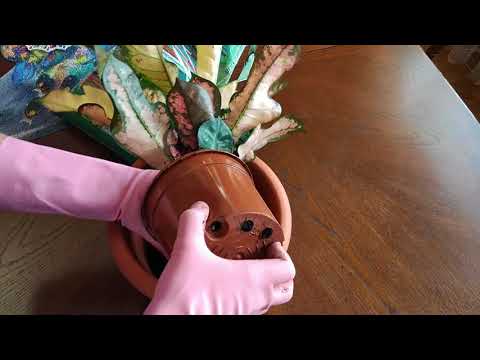

Watch this video on YouTube
Wintering
With the onset of autumn, the plant is transferred from the north-facing window to the south window sill. You also need to reduce watering, but the potting medium should still be a little damp at all times. In the cold season, you also need to moisten the foliage from the sprayer and wipe it with a damp soft cloth or sponge, but the number of these procedures must be reduced. Such a plant does not need to have a shower in winter. Top dressing at this time of the year is carried out 1 time in 4 weeks, however, some experienced flower growers are sure that Croton can do without them in winter.
Reproduction methods
Growing from seeds
When growing croton in room conditions, seeds are used for its reproduction, but only if we are talking about hybrids. For sowing, it is necessary to use only freshly harvested seed, the fact is that it loses its germination very quickly. If you decide to use this method of propagating such a plant, then you must remember that the process of growing croton from seeds is very long and that the grown plants, as a rule, will not be able to maintain varietal characteristics.
The seeds of such a flower are quite large. They need pre-sowing preparation, for this they are kept in hot water for 30 minutes (about 60 degrees), and then left for 24 hours to swell. The seeds should be deepened into the substrate by 10 mm; after sowing, the container is removed to a warm place (about 22 degrees). Until the first seedlings appear, the substrate in the container should be moistened exclusively with bottom watering. After the third leaf plate is formed at the seedlings, they should be cut into individual pots, reaching 70 mm in diameter. You need to take care of the seedlings in the same way as for adult bushes.
Propagation by cuttings
This flower can be propagated by cuttings. The apical cutting takes root the easiest and fastest way, the length of which should be from 60 to 100 mm.In the case when you need to get several cuttings at once, the shoot is divided into several parts, while taking into account that each resulting cut should have one healthy leaf plate, as well as at least one internode. Semi-lignified or lignified cuttings give roots most quickly. The cut sites must be rinsed with running water to remove the toxic milky juice from them. After that, the cuttings are left for 3 hours in the open air, during which time the places of the cuts will have time to dry out.
At the apical cutting in its upper part, the leaf plates must be shortened in half parallel to the veins, while all the foliage should be cut off from its lower part. The lower cut is treated with Kornevin, after which it is placed in a vessel with water, which must be heated up to 23-30 degrees all the time (to prevent the development of rot). The container with the handle is removed under a bright diffused light and wait until its roots grow. After the length of the regrown roots is 20 mm, the plant must be planted in a new pot filled with soil mixture for croton (see above). After planting the cuttings, during the first decade near the bush, it is necessary to maintain increased air humidity, for this, the plant is often moistened from a spray bottle. When the cuttings are accepted, their leaf plates will restore turgor.
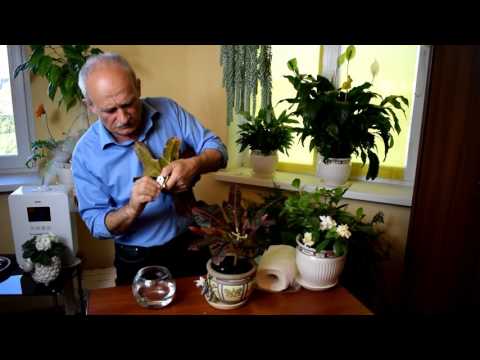

Watch this video on YouTube
Croton pests and diseases
Pests
Croton can accommodate nematodes, spider mites, mealybugs and scale insects. However, most often it suffers from spider mites, and why this happens and why this flower is so attractive to this pest, experts cannot say for sure. In some cases, having tried all the ways to combat ticks and fail, the florist decides to get rid of the diseased plant. However, do not forget that if you adhere to all the rules of care, then pests will not settle on your flower. And the most common reasons for the appearance of mites on a plant are irregular watering, insufficiently high humidity, as well as unsystematic wiping of leaf plates. To get rid of the mealybug, spider mite or scabbard, use a tobacco solution to which soap is added, it is used to wipe the aerial parts of the bush. After 60–90 minutes. after processing, the composition must be carefully washed off the plant, while it should not get into the soil mixture.
Possible problems
If you make mistakes in croton care, various problems can arise, for example:
- The foliage has dropped by the bush... In the event that the leaf plates of the croton sank, this indicates that it cannot absorb moisture. This is due to the fact that the root system is in the cold. Such a bush must be transferred to a well-lit and warm place, water it only after the top layer of the soil mixture dries out a few centimeters deep, feeding should be stopped for a while. After the foliage is well moistened from the sprayer, a transparent cap or bag must be put on the bush.
- The bush dries up... If only the lower leaf plates of a flower dry up, then this is a completely natural process, as a result of which the lower part of the stem is exposed. If the air humidity is not high enough, then the tips of the foliage are drying out in croton, it should be noted that the optimal humidity level for it is about 70 percent. If brown specks form on the foliage and its edges dry out, this means that the room is cold and the bush is freezing. Drying and flying of foliage is associated with excessively rare or poor watering.
- Flying around foliage... It has already been mentioned above that the subsidence of the leaf plates may be associated with improper watering or with excessively low air humidity.The bush can also shed foliage if it is very cold in the room, it was exposed to a draft or due to sudden changes in temperature. What to do if the bush begins to shed its foliage? Remember the rules for caring for such a plant and understand where you made a mistake, and then try to fix it.


Watch this video on YouTube
Croton species with photos and names
At home, motley croton is cultivated, it differs in that it can change the color and shape of the foliage, depending on the conditions in which it grows. Due to this, it is this species that is most often used by breeders for their work, as a result of which a large number of hybrids, varieties and varieties were born.
Variegated croton (variegatum) - in the wild, it can be found in China and Pakistan. The height of the bush is about 3 m, it is decorated with brownish-green leaf plates with short petioles. This species has several forms that differ in the outline of the leaf plates: adnexal, lobed, flat-leaved and painted, thanks to which many varieties were born:
Mrs. Ayston
This large bush or tree adorns the foliage of a rich maroon color with bright pink spots. There is a variety with golden foliage with almost black specks, and also a variety in pink-yellow tones.
Petra
In the wild, it grows up to 4 m in height. Such a highly branching bush is decorated with spectacular foliage, which can be lobed, oval or pointed, it is painted in dark green and has a rich yellow border and the same shade of speck and vein.
Black Prince
Wide-oval flat leaf plates have a greenish-black color and a large number of red, yellow and orange spots.
Disraeli
The lobed foliage in the upper part is green with yellow veins, and in the lower part it is painted brick-brown.
Excellent
The foliage has a shape similar to that of oak leaves, in the upper part it is greenish-yellow, and in the lower part it is burgundy-red.
In addition to these varieties of variegated croton, flower growers are popular such as: croton molluksky, "minus", genoin, oval-leaved, tortoiseshell, curly and spiral.


Watch this video on YouTube

